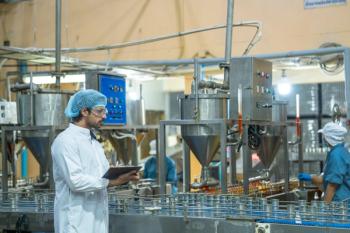
Arthur Palmer Receives EAS Award for Outstanding Achievements in Magnetic Resonance
The Eastern Analytical Symposium (EAS) Award for Outstanding Achievements in Magnetic Resonance will be presented to Arthur G. Palmer III on Monday, November 16.
The Eastern Analytical Symposium (EAS) Award for Outstanding Achievements in Magnetic Resonance will be presented to Arthur G. Palmer III on Monday, November 16.
Palmer received a BA in chemistry magna cum laude in 1980 from Haverford College. At Haverford, he conducted undergraduate research in the photochemistry of carbonyl carbene with Professor Colin F. Mackay. After two years working as an analytical chemist and two years teaching high school chemistry and physics, Palmer entered graduate school, first receiving his MS in Industrial Health from the University of Michigan in 1986 and then completing his PhD from the University of North Carolina at Chapel Hill in 1989. His doctoral research, conducted under the direction of Professor Nancy L. Thompson, developed the technique of high order autocorrelation in fluorescence correlation spectroscopy.
Palmer made the transition to nuclear magnetic resonance (NMR) spectroscopy during his work as a National Science Foundation Postdoctoral Fellow with Dr. Peter E. Wright at the Scripps Research Institute from 1989 to 1992. There, Palmer codeveloped, with Wright, Mark Rance, and John Cavanagh, sensitivity-enhanced heteronuclear single quantum coherence spectroscopy (HSQC) and began his first developments and applications of NMR spin relaxation to characterize macromolecular dynamics. Palmer moved to the Department of Biochemistry and Molecular Biophysics at Columbia University as an assistant professor in 1992 before being promoted to associate professor in 1998 and then to professor in 2001. Palmer currently holds the Robert Wood Johnson junior chair title and serves as interim Chair of the Department of Biochemistry and Molecular Biophysics and as Associate Dean for Graduate Affairs at Columbia University Medical Center. He is also the Director of NMR Spectroscopy at the New York Structural Biology Center.
Palmer is the author of 150 papers and the coauthor, with John Cavanagh, Wayne J. Fairbrother, Nicholas J. Skelton, and Mark Rance, of the book Protein NMR Spectroscopy: Principles and Practice, now in its second edition. Palmer uses NMR spectroscopy and molecular dynamics simulations to elucidate the coupling between conformational dynamical properties and biological functions of proteins. His research interests include the development of novel methods in NMR spectroscopy, computational and theoretical analyses of protein dynamics, and applications to protein folding, molecular recognition, and catalysis. He has contributed in particular to the use of generalized order parameters for characterizing conformational entropic effects in molecular recognition, and the use of CPMG and R1r relaxation dispersion measurements for characterizing microsecond-millisecond time scale processes.
Palmer is interested in the conformational dynamic differences between mesophilic and thermophilic enzymes that contribute to differences in activity, using the ribonuclease H superfamily as a model system. Other recent applications include the mechanism of strand swapping in dimerization of cadherin cell adhesion proteins, the role of local dynamics in DNA recognition by the GCN4 bZip transcription factor, and dynamic control of the order of substrate addition in the DNA-repair enzyme AlkB.
Newsletter
Get essential updates on the latest spectroscopy technologies, regulatory standards, and best practices—subscribe today to Spectroscopy.





